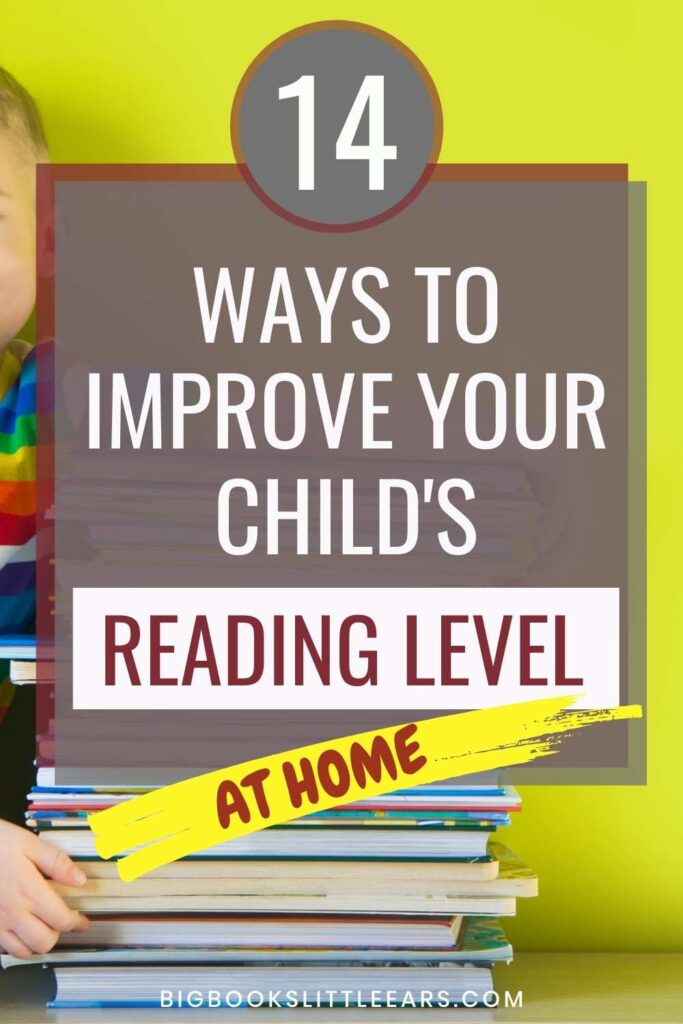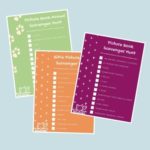It can be hard to know what to do when your child is having difficulty reading. Maybe you’ve even been told by the elementary school that you have a child reading below grade level. It can be difficult to figure out what it means when you find out that your child is reading below grade level, but it could have left you feeling like you let your child down somehow. Please don’t feel that way! There’s a lot you can do to help your child having difficulty reading.
This article is by author Sandy Brannan, an English teacher with years of experience helping children with reading difficulties.
How to help my child read?
You need to know that there’s no way to predict the exact age a child will be when he reads at a certain level. If your child is having difficulty reading, what you want is for your child to make progress. Sometimes that means you need to go back to the basics to help your child read.
Remember, you don’t want to cause your child who is struggling with reading to feel any pressure at all because reading should be enjoyable. That’s a challenge when, in school, your child connects reading with tests and associates tests with his personal worth. Ouch! No wonder an elementary child reading below grade level is stressed out about reading. He doesn’t have to stay that way, you can get your child’s reading level up!

While you try to figure out how to help your child read better, they may seem indifferent about reading. This is normal for a child having difficulty reading. If you have a child reading below grade level, he may even tell you he doesn’t like to read. That’s normal. Use this time of helping him with the fundamental skills of reading to also help him discover the joy of reading.
There are a few simple steps you can take to get your child’s reading level up. It might be appropriate for you to go back to one of these steps to help your child catch up. However, it’s important for you to not consider your work done when your child begins to read at grade level. Your role, as a parent, doesn’t stop there, because reading comprehension and enjoyment is a lifelong journey!
If you click on a book title it will take you to the Amazon page to purchase the book. As an Amazon Associate I earn from qualifying purchases. It does not cost you extra to purchase through my links.
How to get my child’s reading level up?
- Model reading as a positive experience.
Let your child catch you in the act, then talk about books as the absolute treasures that they are. Share what you’re reading with your child. Let him learn something new about you by observing the type of reading material you enjoy.
- Give him the choice to read what he enjoys, too.
This one can be a bit tricky because you first need to expose him to a wide variety of reading material. If you don’t have a huge book collection at home, that’s okay. Visit the public library. Download the app offered by your public library and browse the enormous selection of free ebooks and audiobooks.
Take a trip to a bookstore just to look at the covers and read the backs of whatever books your child gravitates toward. Spend time with your child as he does this so you can get an idea about his reading interests. Then use this knowledge to compile a wish list for books for him to receive as gifts. When someone asks what he wants for his birthday or for Christmas, you will have the title of a book handy. Help your child to associate reading as a gift, something to enjoy, and something he doesn’t have to earn.
Related: 5 Tips you HAVEN’T Heard Before if you Have a Reluctant Reader
- Make reading a part of your everyday life as a family.
Driving in the car? Listen to an audiobook together. Having quiet time at home? Use this as an opportunity to snuggle on the couch with a stack of books. Be creative. Have book tasting days where you set the table with books, allowing each member of the family enough time to read the first few pages before sharing with everyone else about what they read. If time permits, turn this into a game of musical chairs. There are so many ways you can present reading as a fun activity instead of something your child may be associating with boredom or even fear of failure.
Related: You Don’t Have to Homeschool to be a Read Aloud Family!
- Don’t feel rushed to get your child’s reading level up.
As you work with your child at home, follow his lead. Don’t feel like you’re in a race against time to get your child caught up with others his age. He will develop at his own pace if you simply make the proper resources available to him and then guide him through the necessary skills.
Related: Why you should IGNORE publisher’s suggested reading level
- Read aloud to your child who is struggling with reading.
This is absolutely the best way to help a child with reading difficulties. This lets him hear everything you’re trying to teach him. He hears those phonemes. He’s aware of your cadence which helps him understand fluency. As you stop and mention something that was funny or that surprised you, he’s picking up on clues that will help him with comprehension. Your child is never too old for you to read to him. Read slowly. Let him enjoy the pictures. Allow him to ask questions, but don’t overwhelm him with too many of your own. Let him relax into reading.
Related: The Best Short Illustrated Read Aloud Chapter Books
Most importantly, see this time together as an opportunity to grow closer to your child as you help him with one of the most important skills he will ever learn. You’re giving him a gift as you figure out how to help a child with reading difficulties.
How to help my child read?
So, those were five general steps you can take to help your child reading below grade level. But what if you want to get more specific? Read on for nine crucial educational steps that every child with reading difficulties must progress through in order to become a better reader.
How to help a child with reading difficulties?
- Go back to the basics.
Depending on the age of your child, you may have to go all the way back to the alphabet because that’s where reading starts. Your child first must recognize the alphabet, understanding the names of each letter, before he can move on as a reader.
- Connect the sound to the letter.
Once he has mastered the alphabet, a child who is a struggling reader needs to make the connection between the sounds each letter makes and what he sees in writing. This is called phonemic awareness and is imperative to reading. Words Their Way is one of the best resources for practicing phonemic awareness, but there are many more resources readily available to teach this skill.
- After that, a struggling reader is ready to tackle phonics.
Phonics is understanding how the sounds of letters work together. Your local librarian or your child’s teacher will both know good free resources that will be age appropriate for your child learning to read. (Also check out these free apps for elementary ages, as a few of them might help.) Make this fun. Keep written records so you will know what your child has mastered and what he needs more help with.
- Once your child has mastered these basic skills, you’re ready to introduce CVC words.
The sounds of consonant, vowel, consonant coming together to form a word is the first reading experience for children. He will feel a tremendous sense of success once he can sound out words and read early readers, books designed for those who are just learning to read.
- This is also a great time to introduce sight words to help raise your child’s reading level.
You can post these all over your home using index cards. Talk about them as you see the cards. Make sure your child that is having difficulties reading talks about them over and over because these are words which don’t follow the rules and, therefore, must be memorized. You can make a game out of this. Flashlight tag is one fun example, just shine a light at the word and have your child read it.
Related: These are the Pokemon themed sight word readers my older reluctant reader liked.
- Introduce the “rules.”
After your child gains confidence as a reader, start introducing rules such as short vowel versus long vowel words. Always practice your lessons, but don’t ever feel like just because he has repeated it back correctly, he has completely mastered the skill or that means he is reading at grade level. The truth is you will need to practice these skills a lot. Your child learns through repetition.
- Focus on reading, not worksheets, for actual improvement in reading at grade level.
While worksheets can be a useful tool for teaching certain reading skills, don’t use them in a way that your child may perceive as punishment or boring busy work. Your goal should not be for your child to simply learn to put sounds together and read words in isolation. You’re trying to raise a reader, someone who enjoys reading. You’re giving him the tools to make this happen.
Related: What to look for in a preschool alphabet workbook
- As your child practices you will see an improvement in his fluency.
Don’t worry if this takes time. It’s normal for new or struggling readers to read in a choppy manner. It’s all part of the learning process and how you help your child to read. Be patient, and don’t shy away from helping him when he gets stuck on a word.
- Don’t forget about comprehension.
An excellent way to practice this important skill for a child with reading difficulties may seem counter-productive at first: get your child a wordless picture book, like The Farmer and the Monkey or Journey.
Let him look at the pictures and tell you the story. This is going to help a child with reading difficulties as he starts working with skills such as making inferences and predicting. This is also a great time to let your child write about what he sees in these wordless books. His spelling will probably be inventive spelling at this point because he hasn’t mastered all the rules yet. Letting your child use art to express his comprehension is another way to encourage this type of early reading. The goal is to help him to learn to think critically about reading. This includes accessing his prior knowledge as well as discussing what he is currently learning from his reading material.
Related: These simple and HYSTERICAL graphic novels are great for practicing comprehension!
If you keep a written record as you work with your child, you will have valuable data to share with his teacher. It will be helpful as you both work together to continue assessing your child’s strengths as well as his deficiencies.
Through consistent effort and encouragement, you can help your child read!
About the Author Helping You Up Your Child’s Reading Level

Sandy Brannan, author of Becoming Invisible, So Much Stays Hidden, Masquerade, and Frozen in Time, teaches middle and high school English. A regular contributing writer for Calla Press, she also writes for The Real Deal of Parenting and Her View From Home. You can read more of her work on her blog at sandybrannan.com. Follow Sandy on Facebook, Instagram and Amazon Author.

